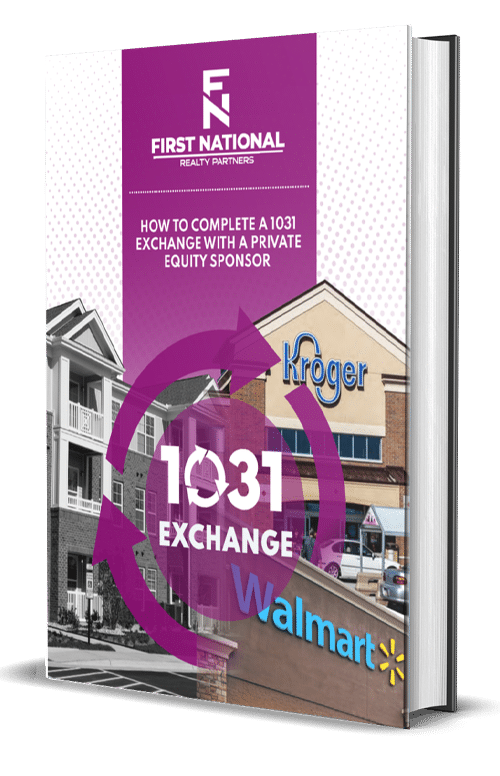In order to protect their financial interest in a commercial real estate transaction, lenders generally prefer to limit the amount of money that they advance. There are two reasons that they do this: first, they want to ensure that the borrower has a vested financial interest in the success of the transaction so he or she won’t walk away if things should turn south; and second, the lenders like to leave room for variations in the value of the property over the life of the loan.
Two of the ways that lenders establish limits on the loan amount involve two financial metrics known as the Loan-to-Value ratio or “LTV,” and the Loan-to-Cost ratio or “LTC.” Although these metrics serve a similar function, they are very different.
What is the Loan-to-Value Ratio?
The LTV ratio is a financial metric that measures the ratio of the loan amount to the collateral property’s fair market value. Breaking down the components of this ratio, the loan amount itself is self-explanatory—it is the amount of the loan that is being considered by the lender. The value, or the denominator in the equation, is a bit trickier. In most cases, it is determined by a third-party appraisal, but this isn’t always available when calculating the ratio. If the appraised value is unavailable, an estimate of value or the purchase price may be used while waiting for the completed appraisal.
The maximum loan-to-value percentage that a lender is willing to advance varies by property type, lender, and location. For investors trying to estimate their maximum loan amount, 75% is a general target. However, a land loan may have a maximum LTV of 50% while a single-tenant, net-leased property could have an LTV percentage as high as 95%. The difference between the value and the loan amount is the borrower’s required down payment.
One of the major limitations of using LTV as a way to estimate the maximum loan amount is that the value can be difficult to determine in a ground-up development project. In such cases, the appraiser will create a pro forma and estimate an “as complete” value—but this tends to be unreliable since the property could be years away from completion, and market conditions could dictate a very different market value in the future. In these cases, lenders prefer to use a different metric, Loan-to-Cost.
What is the Loan-to-Cost Ratio?
The LTC ratio is a financial metric that measures the ratio of the loan amount to the cost associated with the property. LTC is particularly useful for construction loans that involve some uncertainty about a property’s final value. Again, the numerator in this ratio is self-explanatory—it is the loan amount. The denominator is somewhat more elusive. In a development, it could be the total estimated cost of construction. In a purchase, it could be the purchase price of the property, which may or may not be the same as the appraised value.
The allowable LTC also varies by lender, property type, and location. For a single-tenant, net-leased property, the maximum LTC would be 100% of allowable construction costs. In riskier real estate construction projects, the maximum LTC is likely to be in the range of 80%. It should be noted that construction loans are disbursed in draws and that real estate investors are required to put their money in first.
For example, assume that a developer wants a construction loan for a project that has a total cost of $1,000,000. The lender has approved a loan with a maximum LTC of 80%, or $800,000. This means that the borrower must inject $200,000 of their own money into the project—and many lenders will require proof that this has been spent first before they disburse any of their own money.
LTV or LTC?
To further protect themselves, lenders will often calculate both the LTV and LTC ratios and take the lower of the two. To illustrate this point, consider an example. Assume that an investor is seeking real estate financing for the development of a new retail center. The project has a total estimated construction cost of $1,500,000. Once complete, it will have an estimated value of $2,000,000. Per the lender’s underwriting guidelines, the maximum loan-to-value is 75% and the maximum loan to cost is 80%. These two “constraints” will govern the final loan amount as calculated below:
Loan-to-Value: $2,000,000 * 75% = $1,500,000
Loan-to-Cost: $1,500,000 * 80%= $1,200,000
From these calculations, it can be seen that the loan to cost results in the lower potential loan amount. For this reason, the lender will cap the loan with this amount. From a risk mitigation standpoint, this means that the value of the property could decline by up to $800,000 or 40% before repayment of the loan via collateral liquidation is jeopardized. For many lenders, this is a risk that they would be willing to take.
Interested In Learning More?
First National Realty Partners is one of the country’s leading private equity commercial real estate investment firms. With an intentional focus on finding world-class, multi-tenanted assets well below intrinsic value, we seek to create superior long-term, risk-adjusted returns for our investors while creating strong economic assets for the communities we invest in.
To learn more about our real estate investing opportunities, contact us at (800) 605-4966 or info@fnrpusa.com for more information.






